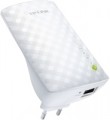LAN
In this case, LAN means standard network connectors (known as RJ-45) designed for wired connection of LAN devices — PCs, servers, additional access points, etc. The number of ports corresponds to the number of devices that can be directly connected to wired equipment. way.
In terms of speed,
100 Mbps (Fast Ethernet) and
1 Gbps (Gigabit Ethernet) are the most popular options today. At the same time, thanks to the development of technology, more and more gigabit devices are being produced, although in fact this speed is critical only when transferring large amounts of information. At the same time, some models, in addition to the standard speed of the main LAN ports, may have
a 2.5 Gbps, 5 Gbps and even 10 Gbps LAN port with increased bandwidth.
Number of antennas
The total number of antennas (of all types — see below) provided in the design of the device.
In modern Wi-Fi equipment, this indicator can be different: in addition to the simplest devices with 1 antenna, there are models where this number is
2,
3,
4 and even
more. The point of using multiple antennas is twofold. Firstly, if there are several external devices per antenna, they have to share the bandwidth among themselves, and the actual communication speed for each subscriber drops accordingly. Secondly, such a design may also be required when communicating with one external device — to work with MU-MIMO technology (see below), which allows you to fully realize the capabilities of modern Wi-Fi standards.
Anyway, more antennas, usually, means a more advanced and functional device. On the other hand, this parameter significantly affects the cost; so specifically looking for equipment with numerous antennas makes sense mainly when the speed and stability of communication are critical.
Note that antennas intended for mobile communications may also be considered in this clause. So when choosing a model with support for mobile networks, it's ok to clarify this point.
Antenna type
—
External. Outdoor antennas tend to be larger than indoor antennas, and they usually have swivel mounts that allow the rod to be placed in the optimal position, regardless of the position of the device itself. All this has a positive effect on signal strength. In addition, there are removable external antennas — if desired, they can be replaced with more powerful ones. The main disadvantage of this option can be called bulkiness.
— Internal. Antennas located inside the case are considered less advanced than external ones. In most cases, they are smaller, and the performance depends on the position of the device (although many manufacturers use technologies to compensate for this effect). At the same time, equipment with
internal antennas has a neat appearance without unnecessary protruding parts.
— External / internal. The presence in the device at once of both types of antennas described above (in this case, there may be more than one of those and others). The presence of several antennas improves the quality of communication, but if they are all external, the device may turn out to be too bulky. Therefore, in some models of routers, a compromise is used: part of the antennas is hidden in the case, which has a positive effect on compactness and appearance.
2.4 GHz antennas
The total number of antennas in the router that are responsible for communication in the 2.4 GHz band. For details about the number of antennas, see "Total antennas", about the range — "Frequency range".
5 GHz antennas
The total number of antennas in the router that are responsible for communication in the 5 GHz band. For details about the number of antennas, see "Total antennas", about the range — "Frequency range".
2.4 / 5 GHz antennas
The total number of antennas in the router that can operate on both 5 GHz and 2.4 GHz frequencies. For details about the number of antennas, see "Total antennas", about the range — "Frequency range".

